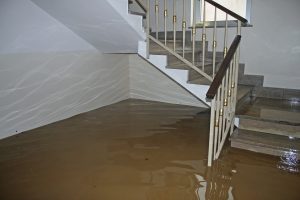TIPS FOR CLEANING AFTER WATER DAMAGE

Do you know how to clean up after your home has water damage?
Whether you are suffering nasty aftereffects from Hurricane Matthew or dealing with a nasty leak, water damage can be a huge headache to clean up. Water damage doesn’t just take a toll on objects that get ruined or mildew growth, it can also cause structural damage to your entire home. How can you properly clean up after water damage and try to minimize the lasting effects?
Take Mold Growth Seriously
First things first, take the potential mold growth that can fester in water damaged areas very seriously. Whether your basement has an inch of water in it or a foot, standing water is the perfect place for mold growth to begin. Mold growth can destroy your walls, ruin furniture, damage carpet or flooring, and cause issues in your family’s health. Preventing mold growth should be one of your core missions when cleaning up water damage (and don’t be afraid to call in a professional from All Aspects Waterproofing to conduct mold testing and help make sure it won’t happen again!).
Protect Yourself
Disconnect the power in the area that the water is touching and make sure that all electronics are unplugged (including power strips and appliances). The less time that these items spend near water, the greater the chance you have to use them again in the future. Electrical items are a top priority also because they can be very, very dangerous if they are submerged in water and electrocute you.
Remove the Water
Once you have removed electronics from the area, remove the water that has accumulated. If you do not have a wet/dry vacuum, you can use towels, buckets, and mops to remove the water. This can take a while, so a wet/dry vacuum is almost always a preferable option (as long as you plug it into a safe outlet that is not near the water). If you are completely overwhelmed with the amount of water in your basement, consider renting a sump pump. The most important way to prevent mold growth is to remove the water and dry the area out as quickly as humanly possible.
Dry Out & Disinfect Your Home
Once you have removed all of the water, use a combination of fans and a dehumidifier to thoroughly dry out the area. If you can, open windows to help get air constantly circulating. If your basement or flooded area has drywall that was soaked with water, cut away the affected areas to prevent mold from growing. Once the area is completely dry, use a disinfectant to remove bacteria that was present in the water and left behind.
Ready to Prevent Water Damage from Happening Again?
If you are ready to get a professional to take care of your residential or commercial waterproofing needs, contact All Aspects Waterproofing, a Better Business Bureau A+ rated company with over 30 years of experience in the Washington, DC./Maryland/Virginia area. We have a great deal of experience in waterproofing, mold testing, and mold remediation, and we want to make you feel at home again. Contact us online or by calling 1-866-999-3110 or 301-766-4420. To see what we’re up to, follow us on Facebook, Twitter, Google+, Pinterest, YouTube, LinkedIn, and Houzz.
